The package might make it seem like earplugs are a cinch to insert, but reality often proves otherwise. Don't let the small size fool you – getting these guys to sit just right can be really difficult. But, we're here to help with our guide on how to put in ear plugs like a pro.
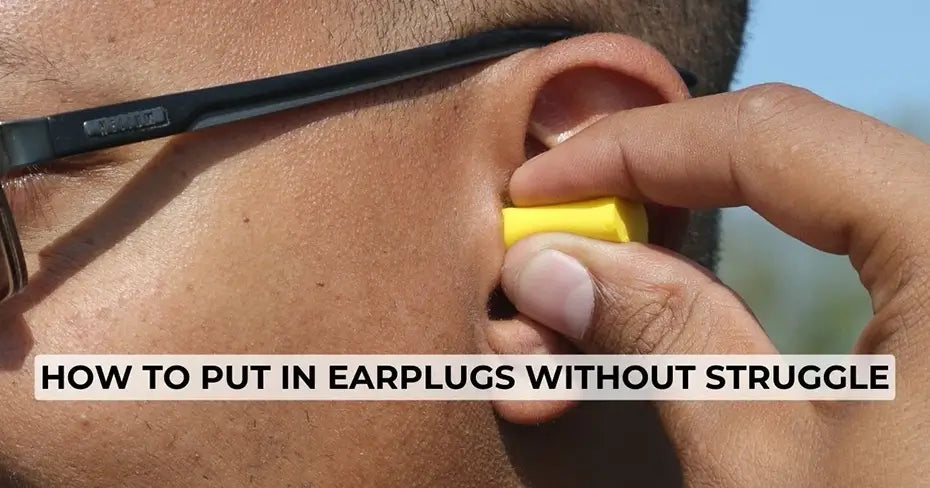
How to put in ear plugs correctly
Earplugs are the heroes of the ear protection world. They're cheap, practical, and they're...kind of tricky to put in. Don't worry, though – we're here to guide you through how to put in ear plugs step by step.
Step 1: Roll them up - compress the foam earplug by rolling it between your fingers.
Step 2: Reach around - reach around your head with one hand and use your fingers to pull your ear up and out. This helps to straighten your ear canal and makes it easier to insert the ear plug.
Step 3: Insert with precision - insert the rolled-up earplug between your thumb and forefinger into your ear canal. Be sure to insert it far enough to form a tight seal but not so far that you can't easily remove it.
Step 4: Hold and wait - hold the ear plug in place for a few seconds to allow it to expand and fill your ear canal.
Step 5: Adjust as needed - if the earplug isn't sitting quite right, gently wiggle it around until you find a comfortable and secure fit.
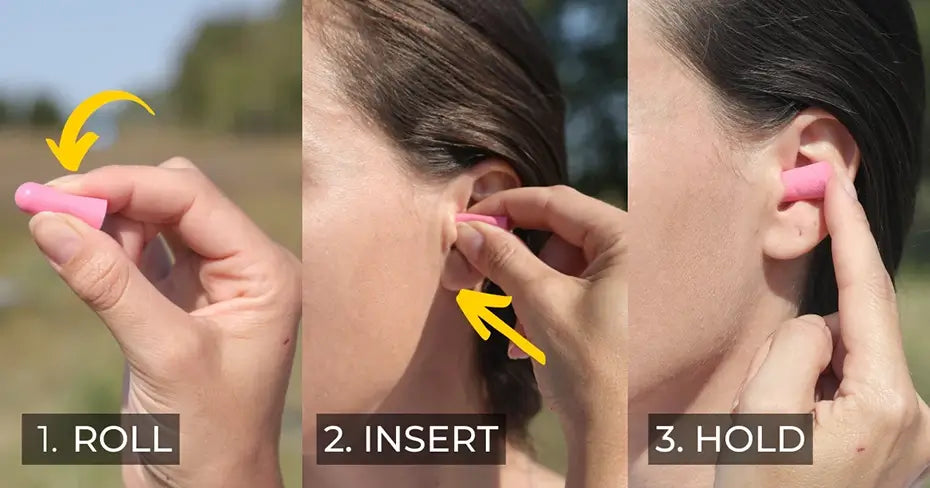
Proper Ear Plugs Insertion - Why Is It Important?
Proper ear plug insertion is really important when it comes to safeguarding our hearing and minimizing the risk of potential damage. The correct placement of ear plugs ensures that they effectively seal off the ear canal, creating a barrier against excessive noise.
By creating an airtight seal, properly inserted ear plugs provide optimal noise reduction, allowing individuals to protect hearing in loud environments such as shooting ranges concerts, construction sites, or airports.
Improper ear plug insertion can lead to reduced effectiveness in noise reduction. Ill-fitted or poorly inserted ear plugs may allow sound waves to leak into the ear canal, compromising the intended purpose of the plugs.
Additionally, incorrect insertion techniques can cause discomfort or pain, discouraging individuals from using ear plugs altogether.

Disposable vs. Reusable Earplugs
It's tempting to go for reusable earplugs. They seem like the more eco-friendly choice, right? But let's face it, disposable foam earplugs are the true MVPs of the ear plug world. Not only are they convenient, but they also come with many benefits that reusable plugs can't match.

Disposable earplugs benefit #1: Hygiene
Disposable earplugs eliminate the need for cleaning and disinfecting, which means less hassle and more peace of mind.
Single-use earplugs are also an excellent option for those with allergies or skin sensitivities. Reusable earplugs can accumulate bacteria over time, which can irritate the ears.
Disposable earplugs benefit #2: Noise-blocking capabilities
Disposable earplugs also offer a superior fit and better noise-blocking capabilities than most reusable options.
For instance, TradeSmart offers ear plugs for shooting with NRR 33, which can protect against loud noises like gunfire. They're made to mold to your ear canal, creating a tight seal that keeps out unwanted noise.
Disposable earplugs benefit #3: Convenience
Disposable earplugs are small, lightweight, and easy to stash in your bag or pocket. You don't have to worry about forgetting your earplugs at home or lugging around a bulky case.
Do single use earplugs require professional fitting?
You might be wondering if single use earplugs require professional fitting. The good news is that most disposable earplugs are designed to fit the average ear canal, so you don't need a professional fitting. They're also typically made of soft, pliable foam that conforms to your ear shape, creating a snug and secure fit.
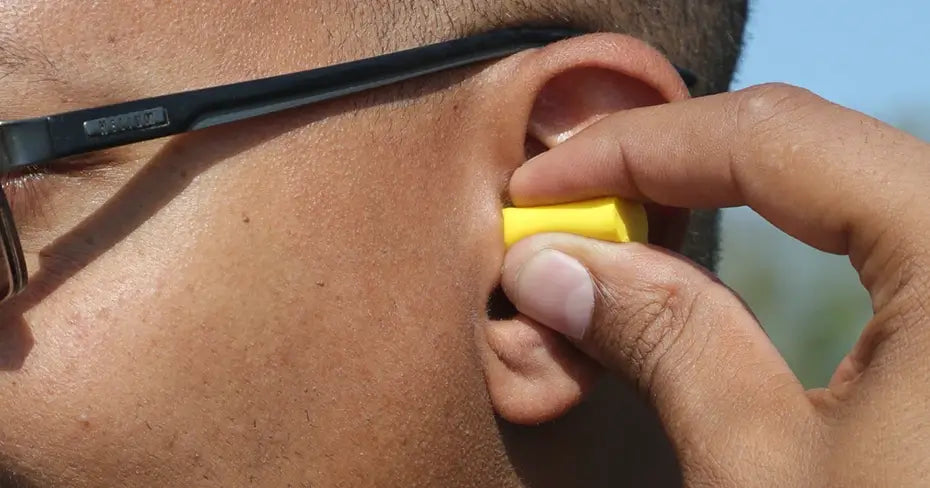
Is it bad to sleep with earplugs in?
Is it bad to sleep with earplugs in? The short answer is... it depends.
On the one hand, sleeping with earplugs can be a great way to block out noise and create a peaceful sleeping environment. But on the other hand, wearing earplugs for too long or too often can lead to some not-so-fun side effects.

For starters, constantly wearing earplugs can cause irritation or even infections in your ear canal. This is usually caused by wearing earplugs that don't fit properly or are made of materials that aren't breathable.
We recommend trying out TradeSmart's shooting earplugs. These earplugs for shooting are certified by the U.S. ANSI 3.19, meaning the quality of materials, the effectiveness of hearing protection, and comfort for your ear canal have been prioritized.
We know you don't want to be fiddling around with earplugs that won't stay put. That's why much thought and care have been put into ensuring these earplugs are effective and comfortable, fitting both kids and adults seamlessly.
Facts and Statistics About Earplugs and Noise Reduction
Here are some facts and statistics on the importance of using earplugs and protecting your hearing:
- According to the Occupational Safety and Health Administration (OSHA), approximately 22 million workers in the United States are exposed to hazardous noise levels on the job.
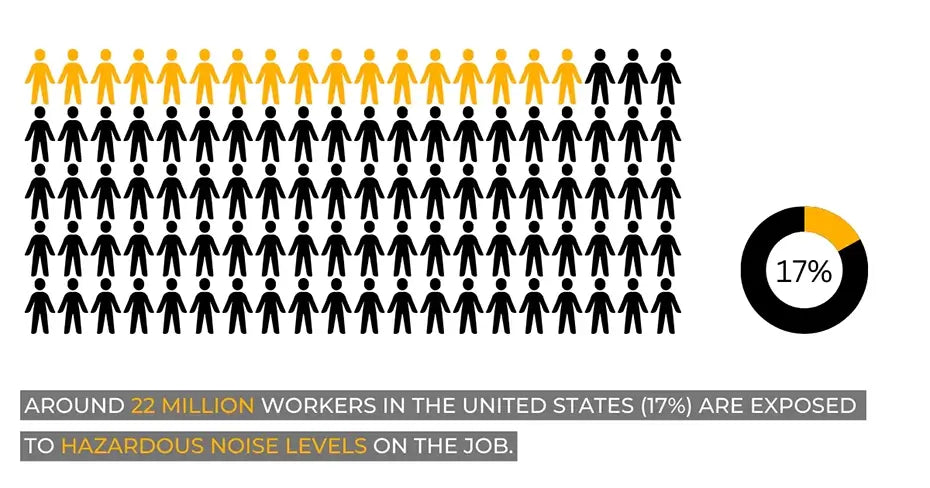
- Exposure to loud noises over time can result in irreversible hearing damage. In fact, about 10 million workers in the U.S. have been diagnosed with hearing damage caused by prolonged exposure to loud noises.

- Earplugs can help to reduce the risk of hearing loss and other hearing-related problems when worn correctly.
- The Noise Reduction Rating (NRR) measures how much noise an earplug can block. A higher NRR means that the earplug is more effective at reducing noise.
- Not all earplugs are created equal. The earplug's fit, material, and design can all impact its effectiveness. That's why choosing high-quality earplugs from a reputable brand is important.
FAQ
How to put plugs in your ears - how deep should earplugs go?
Earplugs should be inserted into your ear canal until they form a tight seal. But don't go too deep – you don't want to push them in too far and risk damaging your ear. Remember, the goal is to achieve a comfortable and effective seal that will protect your hearing.
How do you know if earplugs are in correctly?
A good rule of thumb is to test them in a noisy environment. If the noise is significantly reduced, you're good to go! If not, try adjusting the earplug or inserting a new one.
If you still need help finding effective and comfortable high-quality earplugs, try out TradeSmart's disposable earplugs! These shooting earplugs are certified by the U.S. ANSI 3.19 and have been designed with both kids and adults in mind.
Do earplugs cancel all noise?
The eternal quest for silence – can earplugs cancel all noise? Well, the short answer is no, unfortunately. Earplugs are designed to reduce the sound volume reaching your eardrums but won't completely eliminate all noise.
That said, earplugs can still be incredibly effective at reducing the volume of loud or harmful noises, such as those experienced at a shooting range or a concert. There are many earplugs on the market with different levels of NRR (Noise Reduction Rate). These foam earplugs offer an impressive NRR of 33, the highest NRR you can find!
Is it normal for ears to ring with ear plugs in?
It depends on the situation. If you're in a loud environment, such as a gun range, your ears may still ring even if you wear earplugs.
That's because ear ringing, also known as tinnitus, can be caused by exposure to loud noises over an extended period. So even if you're wearing earplugs, your ears may still be affected by the loud sounds around you.
However, suppose you're experiencing ringing in your ears even when not in a loud environment. In that case, your earplugs may be contributing to the problem. This could be due to several factors, such as an improper fit or an allergic reaction to the materials used in the earplugs.
IMPORTANT: If you're dealing with ringing in your ears, consult a healthcare professional.
Conclusion
In conclusion, protecting your hearing is crucial! Earplugs offer a reliable and comfortable solution, whether at a loud concert, working in a noisy environment, or enjoying target practice at the shooting range. By following these tips on proper ear plug insertion and wearing earplugs, you can ensure maximum protection for your ears.
TradeSmart's earplugs are a reliable and comfortable solution to reduce exposure to harmful noise. But TradeSmart goes beyond providing top-quality earplugs; part of its profits go towards supporting underprivileged kids. This way you have a chance to protect your hearing and contribute to a meaningful cause. Join the effort to make a difference!


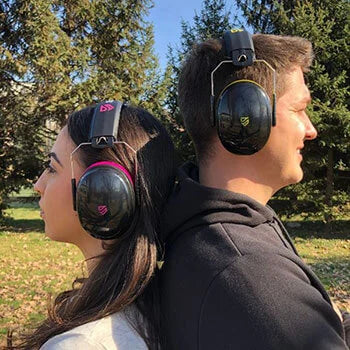





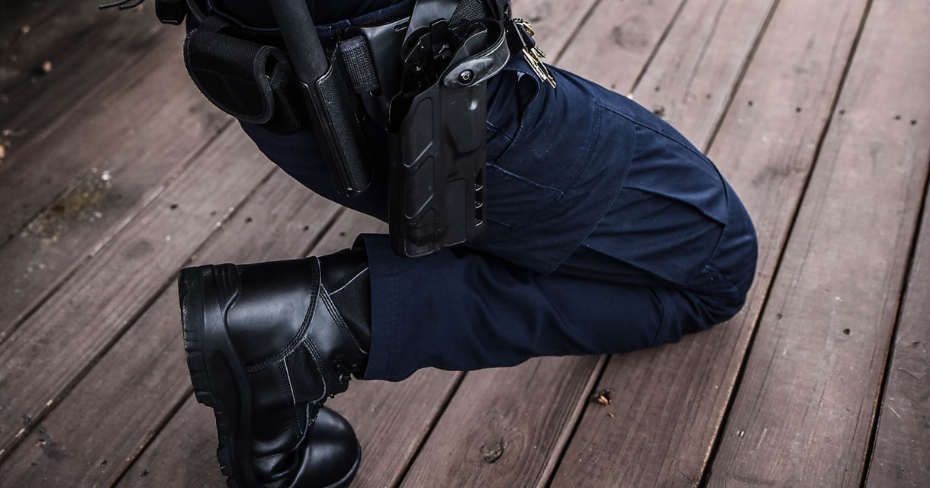

Leave a comment (all fields required)